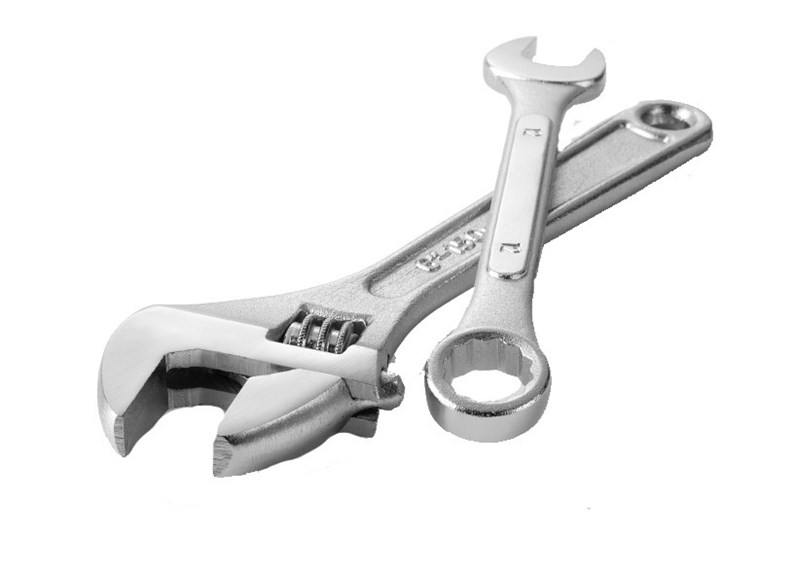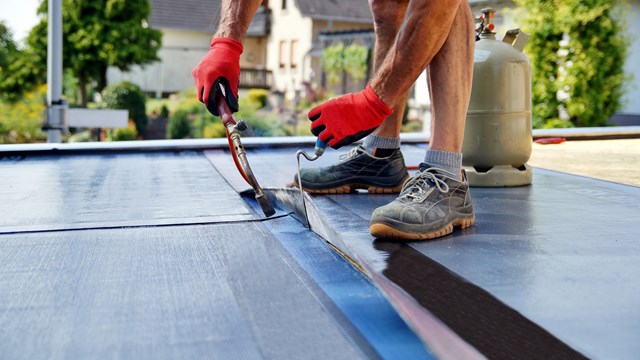If your board of managers or homeowners association is looking for a way to clear driveways, walkways, stairs and other critical access areas quickly and efficiently after a snowfall, perhaps you might consider installing a snow melting system. Although it may seem like a new technology, snow melting systems have actually been around for about 25 years in the United States, and have been used in Europe in commercial and residential applications for more than half a century.
Safety First
One advantage of using a snow melting system is that concrete driveways and exterior surfaces stay safer. These systems also eliminate the time and labor of using a contractor or in-house maintenance staff to plow and shovel paved surfaces and other access areas. No corrosive de-icers or chemical applications are required thus preserving the life of the underlying pavement. And the snow melting system can be designed to shut off when the snow is cleared and the precipitation ends.
"It's beneficial mostly because of the safety aspect—especially on the stairs, which is a critical area for snowmelt and a hard area to keep clear of ice," says Gary Fries, a technical writer at Wirsbo in Apple Valley, Minn., which manufactures snow- and ice-melting systems. "Then there's the convenience. When there is salt and chemicals on the surface, people are going to drag that into the house and wear on their rugs and floor coverings."
Knowing Snow
There are two common types of installations: hydronic, in which hot water or steam is circulated in pipes below pavement level or electric, where coils or cables generate heat to melt the falling precipitation. Both systems involve a series of coils or tubing that are built into a development's driveways, walkways and steps, and controlled with a simple on/off manual switch. The systems can also be remote-controlled and programmed by temperature to automatically come on when snow and ice develop. Both rely on four key elements to turn the entire slab surface into a heat source:
• A heating element, which is embedded in the slab
• Sensors to detect outdoor air temperatures and moisture
• A power source
• A controller to tie in the heating element with the sensors and power source
These systems are designed based on the needs of the development and most companies will work with an architect or designer to decide what works best.
"No system is perfect for every snowmelt job, which is why we carry a variety of systems and will match the best system for each individual project," says Tracy Stanger of the Utah-based contractor Warmzone Inc. "There are several types of driveway heating systems available, and with a condo association we will design to the amount of power they can provide."
"Most homeowners usually go with an on/off system where they have a control like a little thermostat, and all they have to do is push a button and it slowly begins to ramp up the fluid temperature in the slab and then keeps it running on a timer or sensor," says Fries. "Most people like the ability to turn it on, and it'll shut itself off. The biggest thing is that if you know you're going to get snow at night, you can turn your system on and when the snow falls, the majority of the precipitation disappears as water vapor."
Safe Steps
Conductive concrete is doubly helpful with walkways and stairs, since it can eliminate snow and ice buildup as a storm intensifies and continues. No longer do association members or staff have to wait until a storm stops to clear paths. A board's interest in safeguarding against slips and falls isn't just out of concern for their residents' well-being; if a snowy walkway or icy steps causes a serious injury, costly lawsuits could occur.
"Obviously as people get older, they are more likely to slip and get injured on ice and snow," says Tom Szarawarski, office manager of Faber Industrial Technologies in Clifton, which distributes snow melting and floor warming systems. "These systems provide a way to keep surfaces safer and in the long run it's going to be more cost-efficient."
"We have a lot of snowmelt installations on the stairs, so people don't have to physically go and shovel steps," Szarawarski continues. "Those are automatically controlled so when it does get cold enough and there is precipitation, it works."
There are pros and cons for using snow melt technology and each association must determine for itself whether traditional snow removal methods or an automatic snow melting system are most appropriate.
Costs to operate snow melting systems vary widely depending on the size of the development, the area being treated, local utility costs, the type of unit being installed and the speed of operation, according to Ron Raby, an engineering assistant with Watts Radiant in Springfield, Missouri.
A hydronic system, which may be initially more expensive to install and maintain, is less costly to operate, according to Raby. One disadvantage to the hydronic system though is speed of operation. Because a mix of water, antifreeze and glycol fluid needs to be heated up inside the tubing, it may take an hour or more for that process to occur. However, because of the staying power of the heating source, a hydronic system doesn't have to run at full power all the time, Raby says.
An electric system is 100 percent energy efficient, heats up faster than hydronics and requires less capital for construction, but operating costs are likely prohibitive for use in larger areas. Raby also believes that electric systems might fail faster because of the intense heat created in the slab possibly leading to crack damage over time.
"Installation of a full hydronic system could cost anywhere from $5 to $8 a square foot," according to Raby, "and that includes the tubing, hardware, the heat source and the labor."
He also adds that annual operating costs will range from about 12 cents to 25 cents per square foot. So on average, it will cost from $120 to about $250 to melt the snow off a 1,000-square-foot driveway. Depending on local utility rates, electric systems typically cost more to operate. The seasonal cost for that same 1,000-square-foot driveway at about 50 kilowatts ranges from about $275 a year with light snowfall to upwards of $700 annually with moderate to heavy snowfall.
"The way to control budget obviously is to control layout," Stanger says. "Making it the whole width of a sidewalk or do just a narrow strip on a sidewalk, it all has a direct relation to the scope and cost of a project."
Making the Right Decision
When deciding on a snow melting system, one thing that needs to be taken into account is whether all areas should be free of snow at all times, or if a gradual melting after snowfall is acceptable. If the former result is desired, a top-of-the-line system (and consequently higher installation and operating costs) may be required.
"The nice thing about a hydronic system is the flexibility it offers," says Fries. "It can use any type of heat source; it could use electric, gas, oil. Hydronic allows a lot of flexibility in your system as opposed to the electric, which is tied to the utility."
Stanger's company offers both hydronic and electric systems and preference depends on the task at hand, he says. "Electric does the job quicker, the installation is easier, and there's no maintenance on the system," which he believes may be an important factor for a condominium. "But again, we match what the best system available would be. In the case of condos, there are several snow-melting products that will work."
There are still those in the area who aren't ready to stop doing things the old fashioned way, however.
"We don't see installing a [snow melt] system as a practical thing for us because of the expense involved since we didn't design our place with one in mind," says Stan Rothenberg, property manager for C&R Realty & Management in Englewood Cliffs. "What we do is negotiate with snow removal companies and get bids and outline the deeds to the property. Once we're satisfied with the requirements, we sign a contract, and when it snows, we remove it. They use rubber-tip plows, shovels, snow blowers, bobcats. Whatever it takes."
The heat-generating coils or cables can be laid into an existing driveway that is repaved with a fresh coat of asphalt or if the surface is in line to be repaired because of cracks. "A lot of times you see a rehab coming through with an asphalt driveway because it's getting cracked and worn and since they have to tear it up anyhow, they could go ahead and put the snowmelt in," says Fries. " To rip up a brand new driveway would get pretty expensive pretty fast. If there's a reason they will be doing construction, though, it might make sense."
And even though there are electric coils involved, the process couldn't be safer. According to Szarawarski, the design keeps the wires and coils buried in the surfaces and there is no need to worry about the conductive electricity.
"This is a safe and effective way to remove snow and ice," he says. "Snowmelt systems make winters a little more bearable."
Keith Loria is a freelance writer and a regular contributor to The New Jersey Cooperator.







2 Comments
Leave a Comment